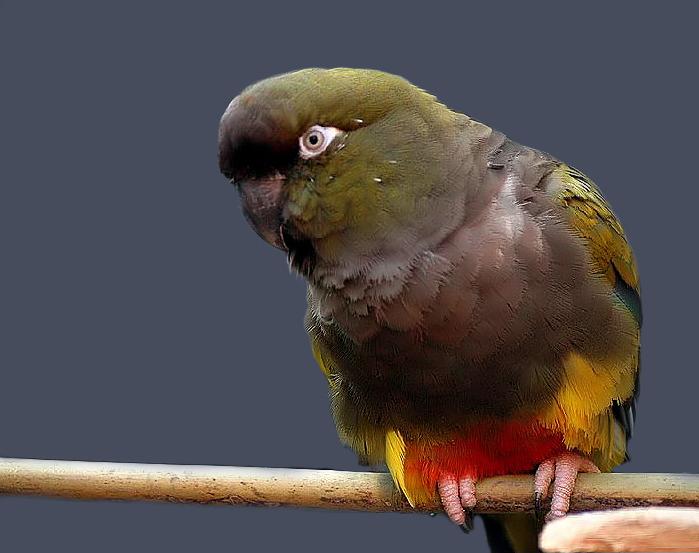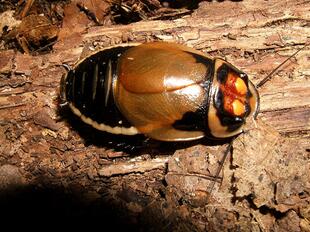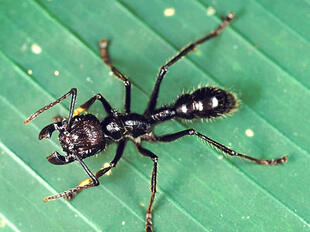
Burrowing parrot, or Patagonian conure (Cyanoliseus patagonus)
Phylum —chordata
Class — aves
Order — psittaciformes
Family —psittacidae
Genus – cyanoliseus
Appearance
These birds are robust and heavily built, with long tails and heads slightly smaller compared to the body. The adults reach an average length of 18 inches (45 centimeters) and will weigh a bit over half a pound (280 grams). These parrots perfectly resemble their native habitat. Their colors are subtle and elegant, and really down to earth. The body is mostly a dark, forest green, with much darker, brownish tones on the chest and back. The main flight feathers are blue. Thighs, lower back, and rump are yellow, best seen in flight, with small patches of red. Around the eyes, there is a white circle, which combined with a black beak, gives an interesting contrast to the overall combination.
Habitat
It is mainly found in Argentina.
Behavior
Like many parrots they are conspicuous and noisy, as well as being very gregarious. They sleep in communal roosts in trees, wires or in their nesting burrows where they gather in large flocks. Before sunrise, they call and flutter around the roost, leaving in a flock at first light.
Diet
The Burrowing parrot feeds mainly on seeds taken from the ground and from the vegetation, but it also consumes fruits and berries. This species also takes grain crops, and is considered as crop pest, involving persecution from farmers.
Reproduction
The Burrowing parrot has a monogamous mating system with very strong biparental care. Genetic testing has recently shown that this species is one of a few animals that is genetically monogamous in a socially monogamous mating system. Nest parasitism is not known to occur in this species.
In captivity
With a bit of basic care and attention, Burrowing parrotcan live easily for up to 35 years.
Get a large cage for your Patagonian conure. Place a grate on the floor to ensure that the bird does not play in its excrement. Throw in a good number of toys to maintain mental enrichment. There should be perches inside the cage. Also, remember to let the bird out of the cage for a few hours daily. Ensure that the cage is not in the way of drafts.The cage needs to be cleaned at least once a week and disinfected once a year. Replace the water and food dishes with fresh ones every day. Trim the wings to make certain that you do not lose your bird through an open window. Trim the beak and the nails if you think they have gotten overgrown.
Any food with a high nutritious value that you eat, you can offer to your Patagonian conure. On a regular basis, you can feed them veggies, pellets, sprouts, and fruits.
Patagonian conures are a very sociable bird, and usually get along with all members of a family, as opposed to gelling with just one. Starving them of interaction with their humans makes them rather vicious.
 Russian
Russian
 English
English
























